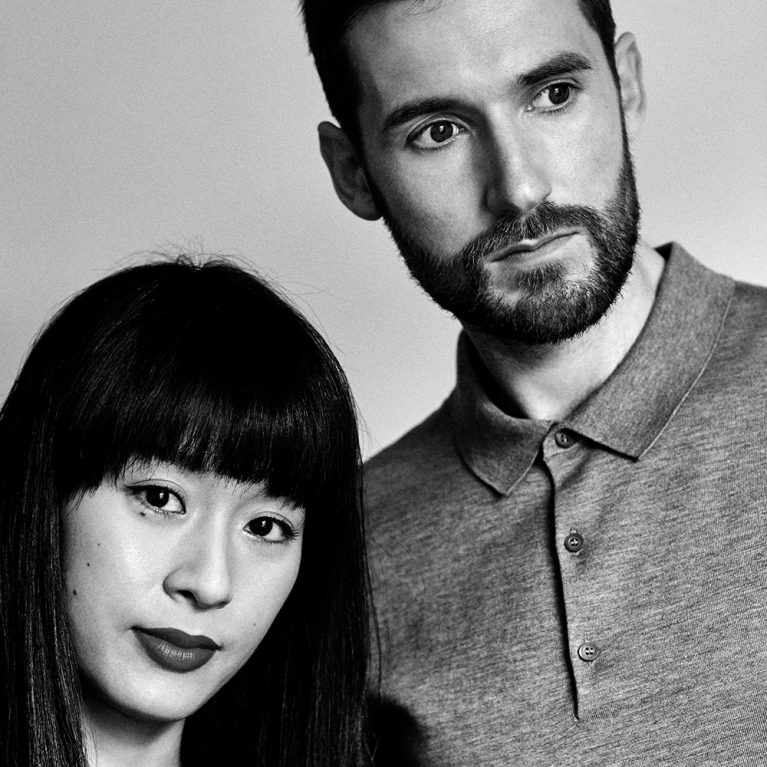interviews
Studio Swine’s Milan
Our relationship with Milan started in 2010 when we were both exhibiting in the city for the first time...

What are the origins of your relationship with Milan?
Our relationship with Milan started in 2010 when we were both exhibiting in the city for the first time. Suddenly the Icelandic volcano Eyjafjallajokull erupted and its ash cloud grounded all the flights, so we were stuck in Milan and had the time to get to know each other. That was when our studio was born.
What is your favourite historical building in the city?
Milano Centrale is the grandest train station we’ve experienced [The rising City]. It’s a wonderful surprise the first time you emerge from the underground to see the staggeringly high, vaulting spaces of the main concourse. The proportions feel closer to mountains than architecture, and the mix of Art Nouveau, Art Deco and Fascist styles is unique. It’s really exciting when public secular buildings such as stations and libraries have a grandeur and luxury usually reserved for royal palaces and cathedrals. Another superb historical architecture is the Cinema Arti designed by Mario Cereghini in 1935 [Monumental Milan]. We first encountered the building when visiting the Sou Fujimoto x COS “Forest of Light” installation in 2016. We’ve got to know the building very well since we were asked to propose something for this space during this year’s Salone. We were really inspired by the sense and desire to be transported when you step through the doors of a cinema, and this led us to think about Italy’s rich film heritage and scenes from Cinema Paradiso. Hopefully we can do justice to that history. The roof of the Duomo is a great walk up into the sky. There aren’t many cities where you can go and stand on the white roof of the cathedral. You get the feeling you’re peeking behind the scenes.
What do you normally do when you are in Milan?
Whatever we do, sooner or later we end up on the Milan Metro, which is one of our favourite subways in the world, particularly the Red Line with its signage and interiors designed by the Albini- Helg studio in collaboration with Antonio Piva and Bob Noorda for the graphics. The project won the Compasso d’Oro in 1964. It’s a really functional space, but they still managed to create a strong character by introducing a sense of fun and aesthetics, blending architecture, seating, lighting, red handrails and graphics into a cohesive identity.
Is there a shop in Milan where you buy special items?
We can’t say we’ve actually bought anything in Milan that’s only available here, but we love the whole experience of stepping into the Prada store in Galleria Vittorio Emanuele II [Monumental Milan]. The fittings are beautifully detailed, with elegant brass brackets supporting cut-glass shelves, marble kickplates on the doors, opulent lighting and fluted brass handles. It all conveys old-world chic, and the beautiful old cafe upstairs further enhances the fantasy.
What is your favourite cafe, bar or restaurant in Milan?
A fun place to eat is the small family-run pizzeria and focacceria opposite Lambrate train station. It’s called Pizza Mundial and we’ve been going there ever since we exhibited as students. We always go there on our way to the Ventura Lambrate design district, and maybe also on the way back!
Which new buildings have transformed the face of Milan?
One of Milan’s outstanding new buildings is the Fondazione Feltrinelli by Herzog & de Meuron [The rising City]. The open transparency of the architecture contributes to the surroundings in the same beautiful, generous way that publishing literature does for society. Meanwhile, the experience of Fondazione Prada Milan is other-worldly. Not only do you see great contemporary art, but the space itself seems to transcend reality. When you cross the stark courtyards in the midday sun you feel like you are actually in a Giorgio de Chirico painting. It is a landmark art space that is set to transform the area on a local level, and it also makes the city of Milan a destination outside the week of the Furniture Fair.
What would you transfer to Milan from another place?
It’s hard to say what could be transplanted from another place.
We actually like not being able to get our favourite things from any other city except for the one where they’re supposed to exist.
The only things we would change about Milan are the airports.
Like many airports around the world, they’re not very evocative of the region. It would be great if there were a really romantic Milanese cafe, if the public spaces and seating had the post-modern design from the Red Line of the Metro, or if the arrivals hall had some of the grandeur of the Milano Centrale station.


